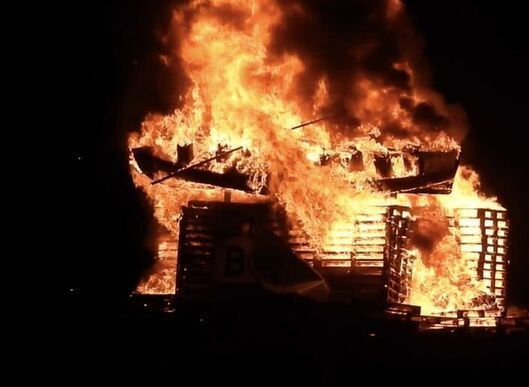Between the Lines / By Peter McDermott
Published in the Irish Echo, Sept. 3, 2014
A granduncle of mine, a Reynolds from Strokestown, Co. Roscommon, volunteered to fight in the Great War. He subsequently spent much of his life institutionalized, in what might have been referred as a lunatic asylum. My great-grandmother from West Clare had two brothers who joined up. The Considine boys survived the trenches in better shape than did Reynolds, but one of them collapsed and died on a troop ship, a short time after he’d participated in an on-deck tug-of-war contest.
I was thinking of this recently when I read that Labour TD for Dublin South-West Eamonn Maloney called on the Irish postal service, An Post, to immediately withdraw their plans for a stamp commemorating John Redmond (1856-1918).
Redmond, a Member of Parliament for Wexford, was the leader of Irish nationalism from 1900, when the Parnellite faction (to which he himself belonged) and the two anti-Parnellite factions reunited, and he remained so up until at least 1916. He believed that it was in Ireland’s interest to fight for Catholic Belgium being overrun by Germany, not least because it would help the cause of his own country’s self-government.
Deputy Maloney said it’s wrong to honor a “politician who promoted, recruited and shamed Irishmen into killing for Great Britain.”
But this seems to be a bit of headline-grabbing that ignores the complexity of the situation.
Prof. Joseph Lee has argued that Redmond was doing what any politician might have done at the time, especially one passionately committed to a united Ireland, which he was.
I cited in a column a few weeks ago Patrick Pearse’s words in December 1915: “The old heart of the earth needed to be warmed with the red wine of the battlefields. Such august homage was never before offered to God as this, the homage of millions of lives given gladly for love of country.”
Other Irish opponents of British war aims, like Sir Roger Casement, were not unhappy with bloodshed as long it was done for the right cause, in the right uniform. Singling out poor Redmond, whose own brother and follow MP Willie died at age 51 in the trenches, is ahistorical nonsense.
Deputy Maloney said that while some called it the Great War, “there was nothing great for the 200,000 Irish recruits who fought in it. There was nothing great for the almost 50,000 young Irishmen who were slaughtered.”
The “Great,” of course, referred to the sheer scale of the war, involving as it did 10s of millions in the entire Western world and much territory beyond it.
My Roscommon kinsman, Stephen, joined the United States army in Chicago (and was later institutionalized there), while the brothers from Clare, Tom and Willie, signed up with the armed forces in self-governing Australia.
In the 1913-set film “The Shooting Party” (1985), a young woman suggests to a friend that he longs for war. He denies it, but adds: “I suppose there’s something in every man that answers the call of battle.”
Wherever or for whatever reasons their loved ones had joined up, hundreds of thousands of families in independent Ireland had a direct connection to the traumas of the Great War trenches. Uniquely in the Western world, though, this was not acknowledged officially in any way.
This reminds one a bit of primogeniture, widely adapted in Ireland after the Famine. The eldest son got the farm. He was king, and the others were pretenders. Likewise with regard to war: one experience was privileged and elevated above the others.
That was perhaps understandable when the wounds were raw following the 1916-23 period. But after a couple of decades, by which time even veterans who had fought for independence were joining the British and other armed forces during World War II, it really didn’t make much sense. (My grandfather was an anti-Treaty republican interned for over a year in 1922/23, before he was even eligible to vote, and served in the RAF police during World War II). Looking back, it seems to epitomize the state’s insularity and immaturity. One might detect in it the self-perpetuating ideology of the political elite, the first-born as it were, which was disproportionately made up of leaders from the 1916-23 era.
The novelist Tom Phelan is someone who has been vocal on this issue in pieces in these pages and elsewhere and it’s the backdrop to his acclaimed novel “The Canal Bridge,” which was published in the U.S. for the first time this year.
I know from interviewing Phelan a few times that inclusion is a value that he puts above most others. He has bad personal memories working as a young curate in England in the late 1960s with a parish priest who didn’t make him feel at home. He faults too the Irish bishop who didn’t once visit his brother, who was also a priest, during the two years of his terminal illness. He has clashed about the church’s treatment of younger clergy with New York’s Cardinal Dolan in the letters page of the Irish Echo.
The survivors of the 1914-18 war from his native Mountmellick, Co. Laois, found no honor at home or real sense of inclusion, he believes. Among those he remembered from his 1940s and ’50 childhood – the inspirations for “The Canal Bridge” – was farm laborer Jack Staunton, who Phelan’s father said had rescued his commanding officer from no-man’s-land.
“I won’t say they were ostracized,” Phelan recalled. “But nothing was made of them.”
We can, perhaps, make something of them now, the men who set out from towns like Mountmellick, from the tenements of Dublin, from the hamlets of Protestant Ulster, from Chicago and from Australia – men who mostly felt that they were doing the right thing by their family and their community.









